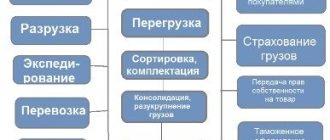Overdraft is a fairly common type of lending among legal entities, which allows you to spend funds in excess of the balance on your current account. An overdraft can also be provided to an individual if there is a need for an amount exceeding the debit balance on the account or card.
In this article we will talk about the features of an overdraft and its main differences from a line of credit. We will also look at examples of bank overdraft for businesses and individuals, and provide an overview of bank cards that allow you to use this service.
Overdraft history
The first overdraft was provided in the 18th century. In 1728, the Royal Bank of Scotland advanced William Hogue a thousand pounds sterling in excess of his account balance. Subsequently, this service became widespread in other European countries and in the USA. Banks began to charge interest on overdrafts, the calculation mechanism of which differs from interest on a regular loan.
For a long time, only legal entities could receive an overdraft from a bank. Later, with the widespread use of bank cards and the predominance of non-cash payments, the service became available to individuals.
Popular banks offering overdraft
Overdrafts are often taken out by companies to exit the bankruptcy stage. Ordinary people resort to this service much less often, because consumer loans are much simpler in terms of calculation and payments. Overdraft lending is carried out by:
- Bank Russia - up to 300 thousand rubles. for 12 months, cost - 11%. “Classic opportunity” is provided for individuals;
- Alfa-Bank - an offer for business owners in the amount of 300 thousand to 10 million rubles. for a year with a 60-day interest-free limit, rate 13.50-16.50% per annum;
- Rosbank - for salary clients with a value of no more than 600 thousand rubles, on demand, the fee is 23% per year;
- Tinkoff Bank. If you repay the loan on time (within 25 days), only a daily commission will be charged. Its value depends on the amount borrowed. The maximum limit is 400 thousand rubles;
- Promsvyazbank has a line of overdraft products for corporate clients (with a set tranche period, advance, with a single, floating or fixed limit). Credit conditions are determined individually;
- Tochka Bank serves legal entities and entrepreneurs. The first type of overdraft provided is “For business” (30-500 thousand rubles at 21-25% per annum), the second is “Business advance” (from 50 thousand to 1 million rubles with a mandatory one-time payment of 10% of amount issued). Repayment is carried out within 7-28 days. Applications for an overdraft from new clients will not be considered, since it is necessary to already use the bank’s services;
- Sberbank offers an overdraft for individual entrepreneurs and legal entities. The limit can be calculated based on the accounts of the parent company or the general company if you use the “Overdraft with a general limit” program. The Express Overdraft offer allows you to receive up to 2.5 million rubles. Flat rate – 14.50%. The loan is given for a maximum of 360 days;
- VTB promptly provides funds in the amount of up to 150 million rubles. at 11.50% and higher for 24 months. There is no issuance fee. It is not necessary to reset your account every month.
Also issuing overdrafts are: Rosselkhozbank, RaiffeisenBank, Post Bank, Svyaz-Bank, RNKB and others.
What is overdraft
Overdraft (from the English overdraft - overspending ) in simple words is the provision by the servicing bank of funds exceeding the account balance for current expenses, at a certain percentage. There is a limit on overdraft, which is established by the agreement. To understand the mechanism of the service, let's give an example.
The organization has a debt to the supplier in the amount of RUB 3,750,000. ($50,000 or UAH 1,450,000), the debt is due the next day. There are penalties for late payment. In this case, the balance on the current account is RUB 2,250,000. ($30,000 or 870,000 UAH), and no funds are expected to arrive in the next few days. In order not to pay fines and not lose the trust of the supplier, the company can use the overdraft service at the bank. For this purpose, an agreement is concluded, which is an addition to the agreement for settlement and cash services. The organization issues a payment order for the expenditure of funds in the required amount, the difference in the amount of 1,500,000 rubles. ($20,000 or UAH 580,000) the bank transfers to the current account.
Later, upon receipt of the amount of 1,500,000 rubles. ($20,000 or UAH 580,000) from buyers, the company can use these funds to repay the overdraft. At the end of the month, the bank charges interest for the use of funds based on the number of days from the date of issue to repayment.
Features of the classic and secured overdraft scheme
Technical overdraft - what is it? What is an overdraft in simple words?
Reasons for revoking licenses from banks - read here.
There are different types of overdraft, from which the client can choose and use the optimal one for himself. Another one is classic.
The term classic overdraft is usually understood as an agreement by the bank to provide credit funds to the client if necessary (making settlements on payment documents or other cash transactions).
Limits are calculated individually for each client and are determined based on half the minimum turnover on the borrower's account per month.
Features of the “secured” type: the bank provides a credit limit for use secured by property. This could be real estate, liquid products or goods, vehicles and other expensive property.
In some cases, the bank may require the support of a third party (guarantee); such actions reduce the lender’s risks to a minimum.
The difference between an overdraft and a loan
So, what is the difference between the concepts of “loan” and “overdraft”? There are several differences:
- A loan is always issued for specific purposes. Overdraft is a non-targeted program; the borrower can use the funds at his own discretion. Usually, when applying for an overdraft, the purpose of “replenishment of working capital” is indicated.
- An overdraft is a loan that is not long-term. As a rule, the contract is concluded for a period of up to one year, less often – up to two years. In this case, the debt must be repaid within 30-60 days after issuance.
- The overdraft amount (the limit approved by the bank) is compared with movements on the client’s account for previous months and usually does not exceed 50% of receipts.
- The interest rate on an overdraft is higher than on a line of credit.
The essence of overdraft
An overdraft is a form of short-term loan within a certain bank limit, which allows the cardholder to make payments even if he does not have enough funds in his current account.
The term overdraft literally translated from Latin means “overspending”, “excess of credit”. In simple words, this is the provision of money at interest for a short period (up to one month). This “overspending” allows the client to use not only the funds that he currently has in his account, but also, as they say, “to go into the red.” This minus is overdraft.
Both individuals and legal entities can receive an overdraft; the only difference is the package of documents for registration.
What is overdraft
An overdraft for an individual is a short-term non-targeted loan that the client can withdraw from his balance in excess of the positive cash balance. For a legal entity, an overdraft means a non-targeted short-term bank loan in non-cash form in case of insufficient funds for current settlements in its account.
Overdraft is a kind of helping hand for the client during a difficult financial period. During a period of unforeseen, but extremely necessary, cash expenses. At the same time, overdraft has more favorable conditions compared to other bank credit products.
What is the reason for the reduced percentage? For the bank, this type of loan poses minimal risk, because soon the user’s card will receive funds - salary, pension, various payments, so it confidently meets the client halfway and provides an overdraft. However, for such a service to be available, it must be connected to a personal bank card.
When do you need an overdraft?
Sometimes situations arise when a company experiences a temporary shortage of working capital. For example, you need to purchase goods at a certain price with a discount or pay employees wages. For such purposes, overdraft lending is an ideal solution.
Overdraft conditions do not allow the use of borrowed funds for the following purposes:
- repayment and issuance of loans or borrowings;
- transfer of funds to your accounts in other banks.
An overdraft agreement provides for a limit on the funds that you can use to cover current expenses. Exactly current ones, because the bank will be able to provide you with a limited amount (50-70% of monthly income). Therefore, if you are planning to purchase a building for an office or a car park, use a credit line. An overdraft will not suit you for such purposes.
If your company has existed for less than one year, then the chances of receiving an overdraft are almost zero, because... The bank requests the history of cash receipts. If you simply changed the bank and decided to apply for a loan in the form of an overdraft, you can provide data from another bank.
For individuals, banks often offer an overdraft service if the client has a salary card from this bank. This type of lending is low-risk for the bank, because You can write off funds to pay off debt immediately after receiving wages. The overdraft limit in this case is set based on the average monthly receipts on the card. The terms and conditions for this service are:
- registration in the region in which the bank is located;
- work experience at the current place of work for at least 6 months;
- absence of overdue debts to other banks;
- age over 21 years.
Types of overdrafts
In the banking industry, experts distinguish two types of overdrafts:
- allowed;
- unauthorized (technical);
What is an authorized overdraft? This is a loan that the client-borrower personally issued (submitted an application). And after the agreed time, the bank approved this application. In this case, the borrower legally uses the established credit. For using money with this type of overdraft, the client pays up to 20% per annum.
overdraft accrual
But when a client spends all the money from his account and goes beyond the established limit, then an unauthorized (technical) overdraft arises. In this case, the interest for using money is completely different, they vary from 50% to 60% per annum. And if this amount is not paid within a few days, the bank imposes an impressive fine.
But still, there are situations when a technical overdraft becomes possible.
The reasons for this are:
- Technical error of the bank. For example, in the event of a technical error, the same amount was credited to the client’s account twice. After the problem has been detected and corrected, the erroneously accrued funds are automatically written off, and if an overdraft occurs on the card during this period, the limit may be exceeded.
- Changes in exchange rates. This situation arises when a person makes a purchase from a ruble card in dollars, euros or any other currency. In this case, the loan is calculated at the current exchange rate. If the exchange rate changes before the client pays the debt, the loan amount may increase. Accordingly, the debt will exceed the permissible limit.
- Unconfirmed transactions. For example, a client made a purchase, and after that funds were debited for another transaction that was completed earlier. This may also result in an unauthorized overdraft.
What do you need to get an overdraft?
The list of documents is determined by the bank individually. According to standard requirements, organizations provide the following documents:
- Constituent documents (charter, certificate of registration, protocol on the appointment of a manager).
- Financial reporting (accounting data with transcripts, movements in the current account).
- Card with sample signatures.
For individuals, usually only a passport and sometimes one additional document (for example, a passport or driver's license) is required. A credit history is requested by the bank independently through a credit history bureau. In some cases, a surety bond may be required.
Types of overdraft
I suggest you familiarize yourself with the types of overdraft for individuals and legal entities. There are two main varieties:
- Allowed (the limit amount is agreed with the bank).
- Technical or unauthorized (the amount of expenses exceeded the established limit).
The first point is clear. Let's look at the second one in more detail.
How can it happen that a client has spent more money than the bank allows him? There may be several reasons.
- Exchange difference. Not all clients use cards in foreign currency. Very often, when going on vacation abroad, we use a debit card in national currency for payments. When performing a transaction, we receive an SMS about the debiting of funds in foreign currency, but in fact these funds do not leave the account immediately, but are reserved at the exchange rate for the current day. The write-off occurs within a few days. If during this time the exchange rate has jumped significantly upward, the money on the card may not be enough.
- Debt to bailiffs. When the bank receives a writ of execution, the amount of debt is written off from the account immediately. If the balance is less than this amount, a technical overdraft occurs.
In the latter case, a negative account balance is possible even if you do not have a debit card with an overdraft. Collections transferred to the bailiff service are written off from any cards and accounts.
Additional fees may apply for using technical overdraft funds. To avoid penalties, you need to follow simple requirements:
- When making purchases abroad, ensure a sufficient balance on the card.
- Check to see if you have any debt submitted for collection. If there is one, it is better to pay it off yourself, without waiting for the funds to be debited from your card.
Another classification of overdraft types
- Classical. This is a standard type of overdraft on an account or card, agreed with the bank, with an approved limit amount.
- Advance. Provided to reliable bank clients in order to attract a borrower for settlement and cash services. To receive an advance overdraft, you must have stable cash flows from your account and no debt to the bank or budget.
- Collection. This type is sometimes used by retail stores and service enterprises, where a significant amount of cash proceeds are deposited in the bank. In this case, the company’s expenses (this type of overdraft is available only to legal entities) must be at least 75% of the collected revenue.
How to connect and disconnect?
So, we found out what an overdraft on a card is, and now let’s talk about the conditions for connecting or disabling it.
Please note that any banking service is activated only with the client’s consent, however, many proposals are included in contracts automatically. In simple terms, a person signs a service contract, unaware that he has agreed to a bunch of auxiliary programs that he might have refused if he had been directly told about them.
That is why we strongly recommend that you carefully read all papers offered for signature. Don’t be lazy to take the time to read the fine print and don’t be afraid to ask the manager to explain unclear terms.
- Well, we found out that in most cases our service is activated automatically.
- To use it manually, you will need to provide the bank with a minimum package of documents and an application:
- Passport;
- SNILS, INN or rights;
- Certificate of income;
- Questionnaire (issued by a bank employee);
- Application (the template will be provided by the employee).
This list is approximate - some banks do not require a certificate of income and an additional identification document. Most often, the service is connected specifically to a salary card, since using it the bank can see the client’s financial history and clearly track the size and frequency of receipts. If you are wondering what an overdraft is for a salary card, it is the same as an overdraft for any other plastic card. We talked about how to connect Sberbank mobile banking via phone in the latest instructions at the link.
In what cases can a financial institution refuse to provide an overdraft line of credit?
- If the client has a bad credit history;
- Funds are not deposited into the account regularly;
- No work experience or official place of work (with at least 3-6 months of experience);
- The client lives in a remote area, in another city, and is a citizen of another country.
To disable the service, simply write a statement to the bank. There are contracts under which you cannot refuse the service. In this case, ask to indicate the limit for receiving money in the amount of 0 rubles.
Remember, it’s not enough to just throw the card in the trash - you won’t close the account. This means that he will be charged an annual maintenance fee. And, if no money is received into the account, it will “go” into the negative – thereby triggering the overdraft line. So, many people, for example, when moving for permanent residence to another country, were faced with an unpleasant surprise in the form of unclosed accounts or a damaged credit history.
A debit card with an overdraft is a time bomb if you handle it illiterately. Remember, as long as your account has a positive balance, you are spending your money. As soon as you go into the red and receive a tranche, you begin to spend other people’s, for the use of which you will need to pay a separate fee. And don’t rely on a free tranche period - statistics show that sooner or later, every client exceeds it, otherwise, the service would be meaningless for the bank in terms of benefits.
Overdraft features
- The overdraft loan is repaid at least once a month.
- Interest is calculated monthly on the current amount of debt.
- The loan term is up to two years.
- With an overdraft, the funds received to the account or card on the first day after the overdraft occurred are used to repay the debt.
When used correctly, this type of lending is very convenient. The main “competitor” of an overdraft for individuals is a credit card. Depending on how often unplanned expenses arise, you can choose the optimal tool.
If such expenses occur infrequently, activate an overdraft service. If you are planning repairs or expensive treatment, it is better to use a credit card with a long grace period.
How to use overdraft: rules
The service is available to the client immediately after activation: the balance on the card will increase by the amount of the approved overdraft. You can withdraw money from an ATM or pay by card.
The debt repayment period is 25 days after the end of the billing period of the month in which the client spent the borrowed funds. That is, if you use an overdraft on November 20, the billing period will end on December 1, which means the money must be returned before December 25. To do this, you need to top up your card account - the required amount will be debited automatically.
The payment amount and date will be indicated in the statement, and Tinkoff will also remind you of the payment by messages to your mobile phone and email a few days in advance.
You can use the service an unlimited number of times within the allowed limit, the main thing is to make payments on time.
Fine for late payment
If you do not deposit money on the card on time, an overdue debt will form. In this case, the bank charges the client a fine: 20% per annum on the amount of debt daily until the overdue amount is repaid in full.
How to disable
To disable overdraft on a Tinkoff card, you need to contact the manager via chat or call the hotline. Before this, you need to fully repay the debt; its amount can be clarified in your personal account.
Conclusion: pros and cons
Overdraft is a convenient and useful financial tool if used correctly.
The advantages include:
• the opportunity to quickly borrow a small amount from the bank without wasting time on applying for a loan • up to 3 thousand rubles, no overdraft fee is charged.
The disadvantage of this service is the size of the commission.
At first glance, the daily fee seems small. But, if we recalculate it as a percentage, we get a rate from 28.71% to 232% per annum, depending on the amount of debt. This is a lot compared to other types of bank loans (for example, rates on Tinkoff credit cards start at 12%).
Therefore, it is more rational to use an overdraft in the amount of up to 3 thousand rubles, or to repay the debt as quickly as possible if it turns out to be higher. If you regularly need borrowed funds, it is more profitable to open a credit card.
I have an overdraft, but I didn’t activate it
An overdraft facility is sometimes included in a bank account agreement. If you signed this agreement without noticing the overdraft clause, the amount of the debt will have to be repaid. In the future, if you do not plan to use this service, you can disable it.
If a technical overdraft occurs when making purchases in another country, charging a fee for withdrawing funds from an ATM of another bank, making an auto payment, or writing off a debt by bailiffs, you will also have to pay the debt to the bank and, possibly, with penalties.
To avoid such situations, follow these simple recommendations:
- Control auto payments. Sometimes people forget that they have activated automatic payment for communication services, housing and communal services, etc. It happens that there is a fee for access to some resources or mobile applications that is automatically renewed. Moreover, the conditions for automatic debiting of funds are often written in small print, which is very easy to miss. When paying for any services, consider whether it is worth saving your card details on this site. It may be better to enter the data again if necessary than to lose money.
- Connect SMS notifications about card balances.
- Please carefully review the information about fees charged for transfers to another bank and withdrawals from ATMs. Sometimes the commission is not written off immediately, but within a few days.
- And most importantly, try not to have enough money on the card. Let a small amount remain, in the amount of 1,500 rubles. ($20 or 580 UAH)–2,250 RUR. ($30 or 870 UAH) - this will save you from penalties. If your card has an annual service and you do not remember the date it was written off, ensure that this amount is always available on the card.
Overdraft for legal entities from Tinkoff
You can connect the service to the current account of an individual entrepreneur or legal entity.
An overdraft will help out if unexpected cash gaps occur. For example, a payment from a buyer is delayed, you urgently need to transfer an advance payment to a supplier of raw materials, but there is not enough money in your current account. In this case, you can borrow the missing amount from the bank: use an overdraft.
How to connect
A prerequisite is that the company’s current account must be opened with Tinkoff.
Overdraft will become available 3 months after business registration. Activation of the service is free, no documents are needed for this.
You can activate an overdraft in Tinkoff Business in two ways:
1. On the account page, click on “Actions”, then “Connect overdraft” 2. In the “Loans” section of the side menu, go to “overdraft”, then “about the loan” and “apply”.
You can also write about your desire to activate the service in the chat or call your personal manager - Tinkoff employees will help you arrange everything.
The bank will review the application within two days and notify you of the decision via SMS. In some cases, Tinkoff itself may approve an overdraft; a notification about this will appear in your personal account.
Limit for individual entrepreneurs and legal entities
The available overdraft amount is calculated individually and depends on the account turnover. The bank can approve up to 30% of the average monthly turnover, but not more than 1 million rubles. Money can only be received in rubles.
To increase the amount of available funds, you need to increase your turnover and avoid delays in overdraft payments. And if you download the history of transactions on other accounts, the likelihood of increasing the limit will also increase. The bank itself adjusts the amount of available funds, this happens automatically every three months.
If Tinkoff changes the limit, it will notify you of this by sending a message to your mobile phone. It is important to keep track of all account information and SMS from the bank so as not to find yourself in a difficult situation at the wrong time, as the overdraft amount may be reduced.
How to use
You can use the available limit after your own funds run out. The bank warns the client with a notification in his personal account or mobile application when he begins to use the overdraft.
The amount of debt can be viewed in the “Bills and Payments” section, where you can also see the available balance.
It is possible to activate the service just to be on the safe side: you only need to pay for it when using borrowed funds.
Can I get an overdraft for my business?
Any organization or individual entrepreneur can apply for an overdraft at a bank. To obtain a positive decision, the following conditions are necessary:
- Your business has been in existence for at least 6 months. It is almost impossible to get an overdraft from scratch.
- You must have regular receipts of funds from your current account. If there were periods over the last year when there were no receipts, you will most likely be denied an overdraft.
- Individual entrepreneurs may require a guarantee.
- If you already have an overdraft with another bank, this information will be known to the specialist reviewing your application. The decision is influenced by the size of your account turnover, as well as the presence or absence of debt on loans and taxes.
Why is overdraft dangerous for individuals?
Having a credit limit on their balance, many people end up in a constant “minus”, from which it is very difficult to get out of it later. This problem is especially relevant for those clients who have a large credit limit, which the money received from their salary cannot cover at one time.
Why is overdraft dangerous?
After the grace period ends, interest begins to accrue on the loan, and it becomes harder and harder for the client to repay the loan.
Having access to a certain amount of money, a person can forget about repaying the debt to the bank. This is called a technical overdraft - debt when paying funds.
If there is no need, it is better to immediately disable the overdraft service.
To do this, just contact the bank and write an application. One of the conditions for such action will be the absence of debt under this program.
debt provocateur
Many experts call overdraft a “provoker” of debt. The realization that you can always use money on a card drives many into a debt hole from which it is not easy to get out. In the West, psychologists have long been appealing to such a concept as “credit addiction.” Feeling a certain freedom of money from such credit products, a person feels excitement and gets used to “living on debt.”
Perhaps this is the only drawback of this loan product. But with a competent approach, in all other cases overdraft demonstrates its advantages.
Advantages and disadvantages of overdraft
Main advantages:
- Simplicity of registration (the package of documents is smaller than that required for a credit line, there is no need to open a separate account).
- Interest is charged only on the amount of funds used.
- The service is convenient in cases of temporary gaps in the receipt and expenditure of money.
Flaws:
- High interest rates.
- The debt is repaid automatically when money is received into the account. If you were planning to use the funds on something else, you will not be able to do so until the overdraft is paid off in full.
- Possibility of technical overdraft.
Procedure and conditions of registration
A prerequisite for individual clients intending to activate the overdraft service is to have an open account or card with a constant flow of funds. The term for providing an overdraft is 30-50 days. After it is replenished, the service is available again. The term of the contract does not exceed 12 months. To renew, it is enough to submit an application.
The amount is determined individually and depends on the level of income, the presence of a stable income and an analysis of the movement of funds in the account. For employees of enterprises who have an agreement with the bank to transfer wages to a card, the limit is usually set at the amount of monthly wages. For example, at Sberbank of Russia you can count on a maximum limit of 30 thousand rubles.
The interest rate varies within 30%. For a technical overdraft through no fault of the bank, it can reach 60%. For example, VTB24 bank offers conditions of 20%, and an unauthorized overdraft will cost the client 50% of the amount.
If an individual is a bank client, the package of requested documents is minimal. You must provide:
- identification document;
- second document to choose from: international passport, driver’s or pension license, SNILS, compulsory health insurance policy;
- application of the established form;
- a completed application form according to the bank;
- certificate of salary (not always).
The processing time for the application is 2-4 days. After activating the service, money is available for use instantly.
Which banks offer overdraft?
Which banks can you apply for an overdraft? This service is available at almost all major banks. The most favorable conditions are offered by the banks Otkritie, PromSvyazBank, Moscow Regional Bank, VTB, RaiffeisenBank, Uralsib.
When applying for a card with an overdraft, you should pay attention to the size of the service fee, the cashback percentage, the validity period of the overdraft and the amount of the limit. Here are a few banks offering such cards:
- Tinkoff;
- "Alfa Bank";
- "Opening";
- Home Credit Bank;
- "MTS Bank".
Comparative characteristics of overdraft and consumer loan
| Comparative parameters | Overdraft | Credit |
| Contract term | Does not exceed 12 months | Range from a month to several years |
| Registration procedure | Simplified procedure, minimum documents | Step by step, security check, solvency assessment |
| Application review period | Up to 4 days | From 2 to 14 days |
| Additional guarantees (collateral, guarantors) | Not required | May be provided |
| Loan size | Minimum, does not exceed the monthly salary | Varies from several thousand to several hundred thousand |
| Interest | Above average, credited to the amount used monthly | Standard, charged on the entire loan body |
| Payment order | Credited in one payment until the limit is completely closed within a specified period of 30-50 days | Monthly payments according to schedule |
| Initiative to conclude a treaty | Bank | Borrower |
Examples of using overdraft
To make it easier to understand how overdraft works, we will give examples described in simple words.
Example 1 . Raketa LLC has been serviced by a commercial bank for 3 years. Average monthly receipts on the account for the last 12 months are RUB 1,125,000. ($15,000 or 435,000 UAH).
In June of this year it is necessary to purchase a large consignment of goods in the amount of 750,000 rubles. ($10,000 or 290,000 UAH), which the supplier provides at a discount. In order not to lose the discount, payment must occur in several stages:
- June 1 – 225,000 rub. ($3,000 or 87,000 UAH);
- June 10 – 225,000 rub. ($3,000 or 87,000 UAH);
- June 20 – 225,000 rub. ($3,000 or 87,000 UAH);
- June 25 – 75,000 rub. ($1,000 or 29,000 UAH).
In addition, on June 15, wages and taxes in the amount of 525,000 rubles must be paid. ($7,000 or 203,000 UAH), and on the last day of the month pay rent and utility bills in the amount of 105,000 rubles. ($1,400 or 40,600 UAH). The bank also charges a commission for cash settlement services - 1,500 rubles. ($20 or 580 UAH), payments to other suppliers will be approximately 225,000 rubles. ($3,000 or 87,000 UAH).
Let's calculate the costs:
Overdraft for collection
This type of loan is provided to those borrowers who use the proceeds for 75% of the loan turnover. Such proceeds may be deposited into the account.
The contract period lasts 1 year, but it can be extended if desired. The validity period of the tranche is no more than 30 days.
Conditions for receiving:
- The borrower's period of activity is at least one calendar year;
- the client has regular and uniform receipts on all current accounts;
- guarantees from business owners are required, the total share of which is no more than 50%;
- presence of two regular customers.
Limit:
The amount of the limit in this case directly depends on the size of the borrower’s turnover, the number of its debtors, the activity of receiving payments, as well as product modifications. Today, the maximum amount that any Russian bank can offer is 50,000,000 rubles.
The limit is calculated using the formula L = I / 1.5. According to the formula, L is the limit, and I is the minimum volume of the client’s monthly income.
Calculating the minimum amount of the collected amount, the bank withdraws the 3 largest cash deposits over the last three months of cash receipts into the client’s account. Of all three calculations, the smallest option is selected.
Interest rate: the average interest rate in this case is 14.5% per annum, and the commission for opening a limit is 1%.











